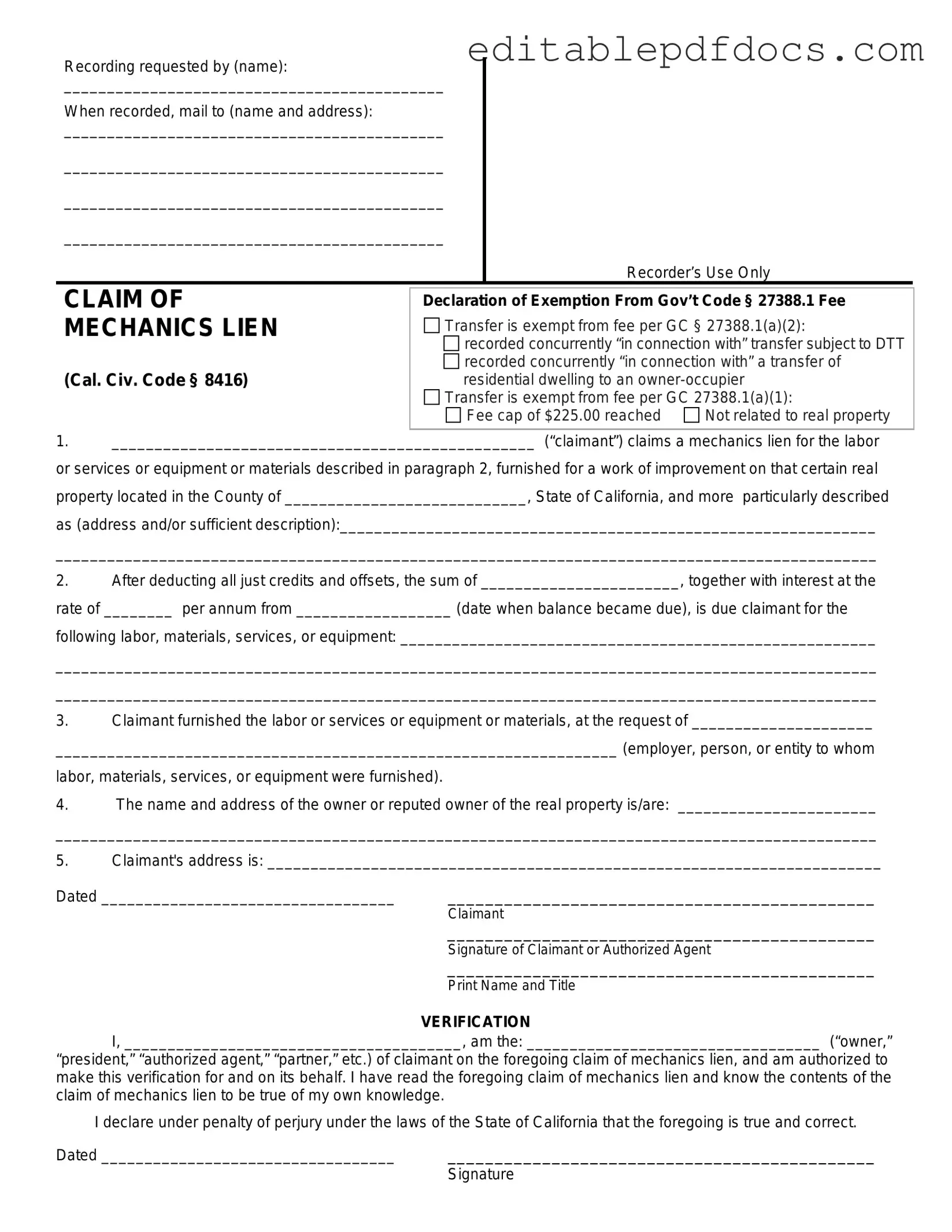Filing a Mechanics Lien in California can be a complex process, and mistakes can lead to significant delays or even the dismissal of a claim. One common mistake is failing to include all necessary information. The form requires specific details about the property, the work performed, and the parties involved. Omitting any of this information can render the lien ineffective.
Another frequent error is not adhering to the proper timeline. California law imposes strict deadlines for filing a Mechanics Lien. If you miss the deadline, you may lose your right to collect payment for your work. It's crucial to be aware of these timelines and to act promptly.
Inaccurate descriptions of the property can also be problematic. The Mechanics Lien form must include a precise legal description of the property where the work was performed. If the description is vague or incorrect, it can lead to disputes and potentially invalidate the lien.
Many people underestimate the importance of notarization. Failing to have the Mechanics Lien notarized can be a critical mistake. Notarization provides an extra layer of verification and can help establish the legitimacy of your claim.
Another common pitfall is neglecting to send a copy of the lien to the property owner. California law requires that you provide a copy of the filed lien to the property owner within a specific timeframe. Failing to do so can complicate your ability to enforce the lien later on.
Some individuals also overlook the need for proper service of the lien. Simply filing the lien with the county recorder's office is not enough. You must ensure that all parties involved receive proper notice of the lien, which is essential for upholding your rights.
Lastly, people often forget to follow up on their Mechanics Lien. Once filed, it’s important to monitor the status and take further action if necessary. If the debt remains unpaid, you may need to initiate a lawsuit to enforce the lien, and being proactive can make all the difference.
